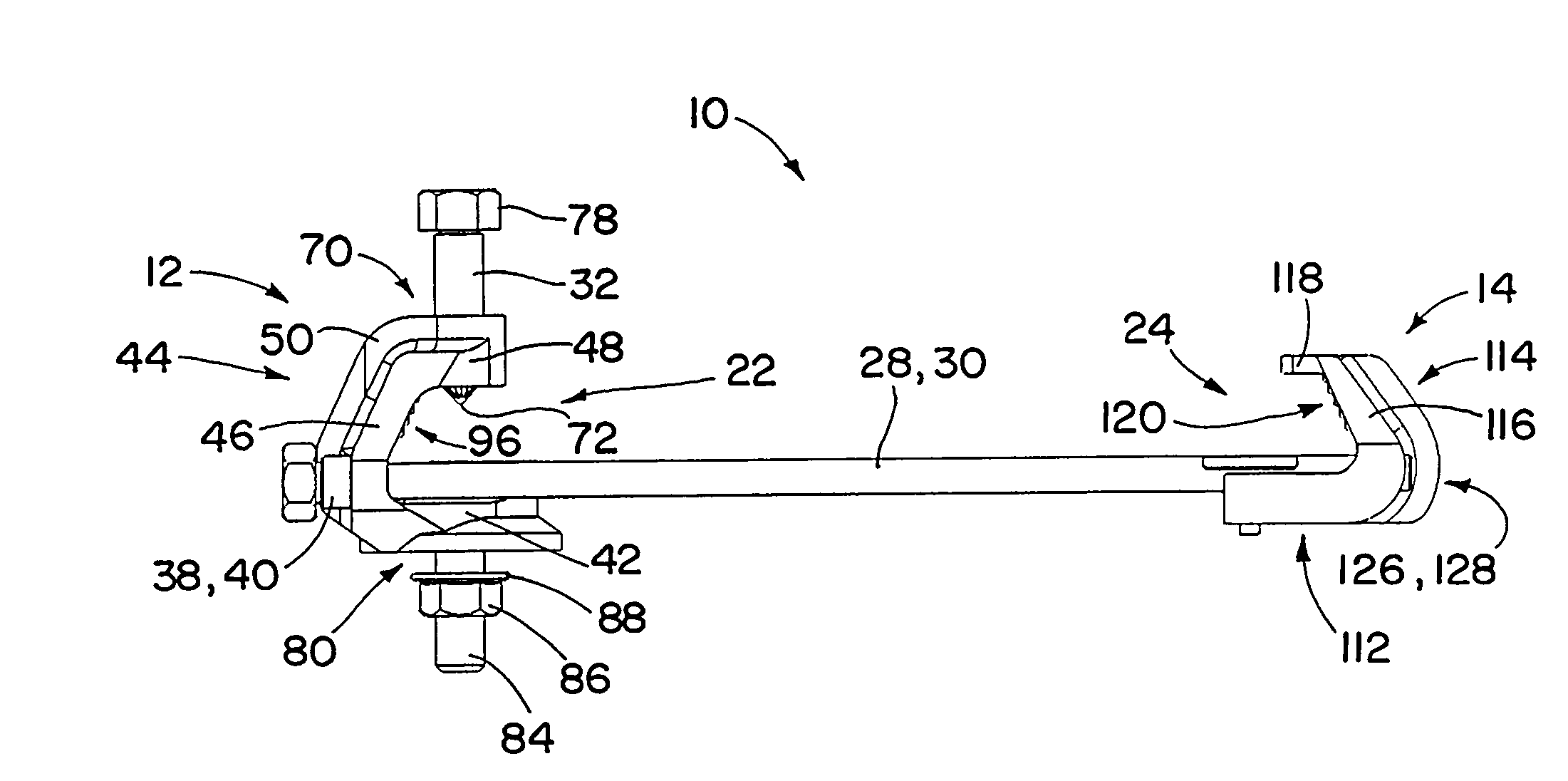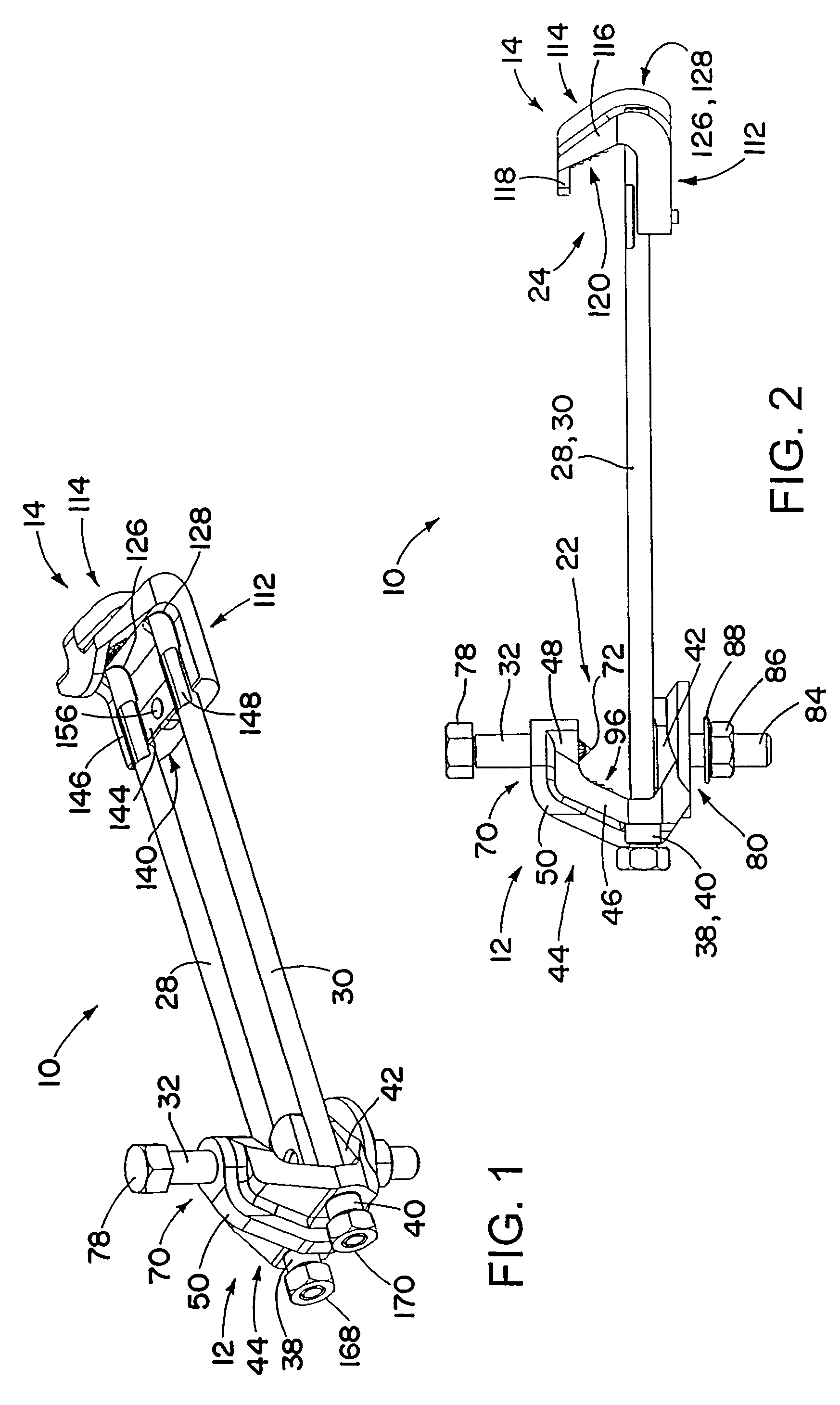I-beam seismic sway brace clamp
a technology of sway braces and beams, which is applied in the field of ibeams, can solve the problems of slipping of the nut brackets off the rods and being lost, and achieve the effect of removing bending moments
- Summary
- Abstract
- Description
- Claims
- Application Information
AI Technical Summary
Benefits of technology
Problems solved by technology
Method used
Image
Examples
Embodiment Construction
[0038]An I-beam clamp, used for engaging the flange of an I-beam, bar joist, or other structural member includes a pair of threaded rods and a pair of brackets that can be moved relative to each other along the threaded rods. The brackets have respective angled openings for engaging opposite ends of the I-beam. The brackets also have steps on inner surfaces facing the angled openings, for engaging I-beam flanges having different thicknesses. One of the brackets, a clamp bracket, has a set screw configured to engage a top surface of the I-beam flange, to hold the clamp in place once it is installed on the I-beam. The clamp bracket also has a mounting hole for mounting or suspending objects, such as sway braces, from the I-beam clamp. The hole for the set screw and the mounting hole may be substantially coaxial. The other of the brackets, a nut bracket, has half-threaded portions for selectively engaging the threaded rods, to hold the nut bracket in place relative to the threaded rods...
PUM
 Login to View More
Login to View More Abstract
Description
Claims
Application Information
 Login to View More
Login to View More - R&D
- Intellectual Property
- Life Sciences
- Materials
- Tech Scout
- Unparalleled Data Quality
- Higher Quality Content
- 60% Fewer Hallucinations
Browse by: Latest US Patents, China's latest patents, Technical Efficacy Thesaurus, Application Domain, Technology Topic, Popular Technical Reports.
© 2025 PatSnap. All rights reserved.Legal|Privacy policy|Modern Slavery Act Transparency Statement|Sitemap|About US| Contact US: help@patsnap.com



